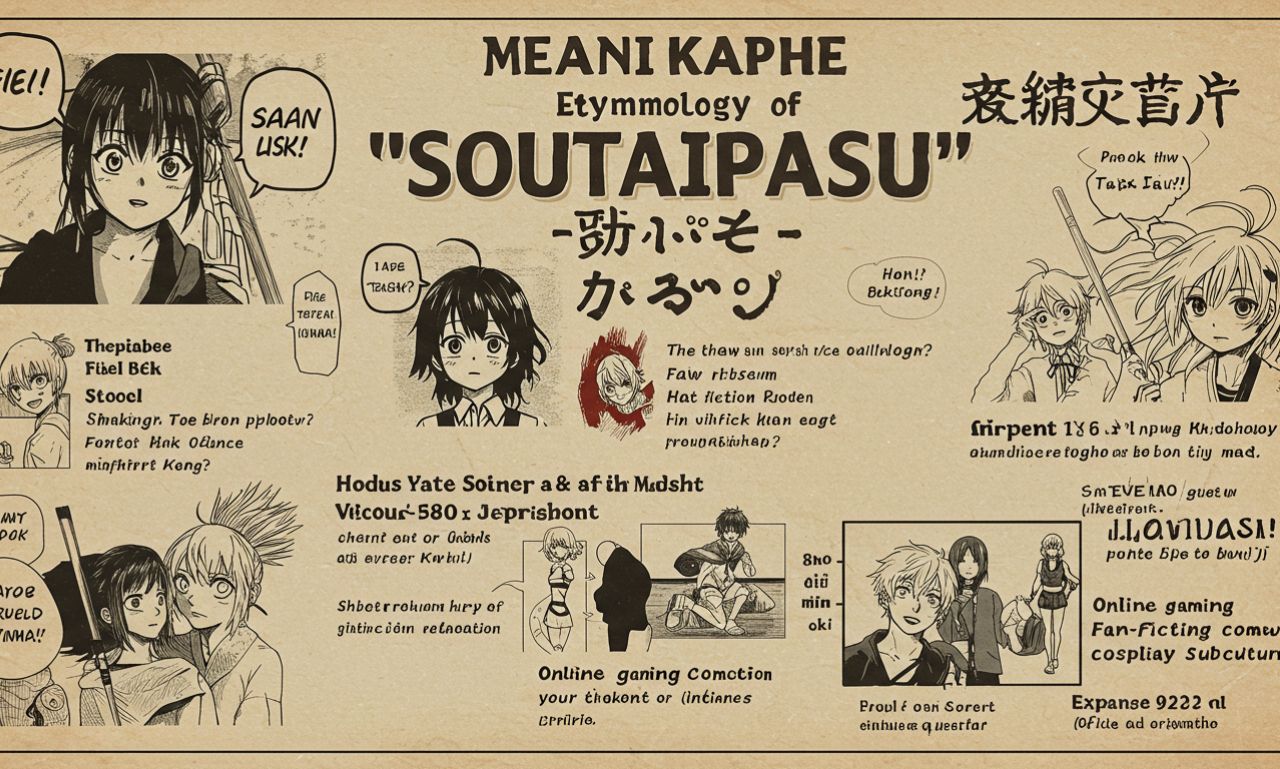The word soutaipasu carries an air of mystery for those encountering it for the first time. More than just a sequence of sounds, soutaipasu represents a cultural, linguistic, and conceptual bridge between tradition and the evolving digital world. Like many hybrid expressions, it reflects how communities merge language, identity, and innovation into new forms of meaning.
Whether interpreted as a symbolic phrase, a modern expression, or even a conceptual tool, soutaipasu captures the essence of transformation. It exists at the crossroads of heritage and innovation—encouraging individuals to rethink their surroundings and embrace new perspectives.
Origins and Etymology of Soutaipasu
Tracing the etymology of soutaipasu reveals its deep roots in linguistic adaptation. Linguists often suggest that it blends elements from Japanese and Western languages, a fusion reflecting globalization. The word may derive from “soutai” (meaning whole, complete, or overall in Japanese) and “pasu” (likely borrowed from the English “pass” or “path”).
This fusion creates a layered term—suggesting an overall passage, alignment, or transition. Thus, it embodies both cultural grounding and global adaptation.
Cultural Meaning of Soutaipasu
Culture gives it a symbolic depth. In some communities, it resonates with:
-
The idea of wholeness and integration.
-
A symbolic pathway or passage through challenges.
-
A reminder that life unfolds as a balance between tradition and modernity.
Its adaptability allows it to find relevance in art, literature, and even everyday conversations.
Soutaipasu in Language and Communication
As a linguistic term, soutaipasu functions both literally and metaphorically.
-
Literally, it suggests transition, entry, or access.
-
Metaphorically, it expresses alignment, transformation, and unity.
Writers and speakers often use it when discussing movement, growth, or change, making it a versatile and powerful word.
Soutaipasu in Education
Education relies heavily on metaphors, and it is increasingly used to illustrate:
-
Pathways to learning—how students progress from beginner to mastery.
-
Overall alignment between knowledge and application.
-
Integration of tradition and innovation in teaching.
In this way, soutaipasu becomes a symbol of progress and enlightenment.
Soutaipasu in Business and Innovation
In the corporate world, it often refers to strategic alignment and pathways to success. Businesses apply the concept in areas such as:
-
Leadership alignment—ensuring vision and goals match actions.
-
Innovation pathways—guiding products from concept to launch.
-
Global collaboration—bridging cultural differences for stronger teamwork.
Here, soutaipasu works as both a metaphor and a strategy—illustrating how order and creativity must align for success.
Soutaipasu in Technology
Technology experts embrace soutai-pasu to describe alignment of systems and pathways of digital transformation. For instance:
-
Software integration as a soutaipasu between tools.
-
AI-human interaction as a soutaipasu for productivity.
-
Network pathways as digital soutaipasu in communication.
Thus, it represents the balance between machine logic and human creativity.
Soutaipasu in Design and Aesthetics
Designers often refer to soutai-pasu when discussing balance, flow, and symmetry. Examples include:
-
Architecture, where buildings embody pathways of light and space.
-
Fashion, where soutai-pasu means harmony between fabric and form.
-
Graphic design, where layouts align elements into a seamless flow.
Here, soutaipasu is not just a word—it’s an artistic principle.
Literature and Art
Artists and writers employ soutaipasu as a metaphor for life’s journey. Poems and novels use it to highlight:
-
The crossing of thresholds.
-
The experience of transformation.
-
The alignment of destiny and choice.
In art, soutaipasu inspires creations that depict pathways, symmetry, and transitions—bridging imagination with experience.
Music and Performance
Music is another realm where it thrives. Performers interpret it through:
-
Harmonies aligning like a pathway of sound.
-
Choreographies representing passages of movement.
-
Storytelling through rhythm, evoking life’s journey and transitions.
Thus, it resonates with audiences as a sensory and emotional experience.
Soutaipasu in Personal Growth
Individuals apply it to personal development by seeing it as:
-
A pathway toward self-improvement.
-
A balance of emotions, actions, and thoughts.
-
A guide for resilience in times of change.
In this sense, soutai-pasu becomes a philosophy for living a meaningful life.
Soutaipasu in Daily Life
Even in casual settings, soutai-pasu plays a role. People may describe:
-
A family working together in harmony as experiencing soutai-pasu.
-
A conversation that flows naturally as soutai-pasu in action.
-
A well-planned day where tasks align smoothly as a soutai-pasu moment.
This accessibility keeps the word relevant across settings.
Soutaipasu in Global Perspectives
Different societies interpret it uniquely:
-
In Eastern cultures, it resonates with balance and holistic unity.
-
In Western thought, it connects with pathways, goals, and order.
-
In global discussions, it symbolizes harmony across differences.
This flexibility makes it a universal concept.
Symbolism and Philosophy
Philosophically, soutaipasu represents:
-
Alignment with nature and destiny.
-
The path of balance between chaos and order.
-
The integration of diverse ideas into unity.
As a symbol, it is timeless—connecting ancient wisdom with modern challenges.
Challenges in Defining
One challenge lies in the fact that soutai-pasu is fluid. Its meaning adapts depending on context, which makes it powerful but also ambiguous. Yet, this flexibility is also its strength—allowing people to make it their own.
Future of Soutaipasu
Looking ahead, soutaipasu may evolve further in:
-
Digital culture, as a metaphor for connectivity.
-
Education, as a framework for learning pathways.
-
Global collaboration, as a concept of unity.
Its relevance will likely continue to grow as people search for balance and alignment in fast-changing times.
Conclusion
Soutaipasu is more than a term—it is a versatile concept that reflects balance, transformation, and pathways of connection. From culture and art to technology and personal growth, it continues to evolve, offering meaning across diverse fields. Its adaptability ensures that it will remain a guiding concept for harmony and progress in the modern era.
